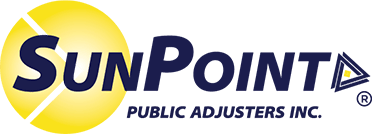The frequency and intensity of natural disasters have been on the rise in recent years, leaving behind a trail of destruction and devastation. To combat this escalating threat, it is imperative to construct homes that may withstand the force of nature and safeguard human lives and property. Building damage-resistant homes not only protects individual households but also enhances community resilience.
Damage-Resilient Materials and Additions to Consider
These items play a pivotal role in creating homes that may withstand earthquakes, hurricanes, floods, wildfires, and other catastrophes.
Reinforced Concrete
Reinforced concrete is a key building material known for its strength and durability. It consists of concrete embedded with steel bars or mesh, creating a powerful composite material. In regions prone to earthquakes, reinforced concrete foundations and walls provide excellent seismic resistance, minimizing damage caused by ground shaking. When combined with proper construction techniques, reinforced concrete significantly reduces the risk of a building collapse during seismic events.
Cross-Laminated Timber (CLT)
Cross-laminated timber (CLT) is a sustainable and resilient alternative to traditional building materials like steel and concrete. CLT is constructed by layering and gluing together perpendicular planks of timber, forming large panels with exceptional strength. These panels create earthquake-resistant buildings due to the wood’s natural ability to flex and absorb energy during tremors. Additionally, CLT is lightweight and allows for faster construction, reducing overall project timelines and costs.
Impact-Resistant Windows and Doors
During hurricanes and strong storms, the greatest risk to a home’s structural integrity is often the failure of windows and doors. Installing impact-resistant windows and doors may prevent high winds and debris from breaching the building’s envelope, protecting occupants and interiors from wind pressure and water intrusion. These specially designed windows and doors are made with laminated glass and reinforced frames to endure severe weather conditions.
Roofing Upgrades
The roof is another vulnerable area during natural disasters, particularly in regions prone to hurricanes and wildfires. Utilizing robust roofing materials such as metal, clay tiles, or concrete may significantly reduce the risk of damage. Metal roofs, in particular, offer superior resistance to high winds and are non-combustible, making them ideal for wildfire-prone regions.
Elevated Foundations
For areas susceptible to flooding, constructing homes on elevated foundations is an effective strategy to mitigate damage. Elevating the living space above the base flood elevation not only prevents floodwaters from entering the home but also allows for better ventilation and minimizes the risk of mold growth after the event.
Reinforced Masonry
Masonry walls strengthened with steel bars or mesh provides excellent protection against earthquakes, hurricanes, and tornadoes. These walls distribute forces evenly, reducing the likelihood of cracks or collapse. Reinforced masonry also resists fire better than traditional wood-framed walls, making it a preferred choice for wildfire-prone areas.
Foundation Anchoring
In earthquake-prone regions, securing a home to its foundation is crucial. Foundation anchoring involves using metal brackets, bolts, and straps to fasten the house firmly to the foundation. This technique prevents the structure from sliding or toppling during seismic activity.
Rainwater Harvesting and Drainage Systems
In regions prone to heavy rainfall and flooding, an effective rainwater harvesting and drainage system may divert excess water away from the home’s foundation. Properly designed gutters, downspouts, and drainage channels may prevent water from pooling around the structure, minimizing the risk of water damage.
Building natural disaster-resistant homes is a necessity in the face of escalating climate change and its associated catastrophes. However, even the most prepared homes may experience damage from unforeseen natural disasters. When this happens, it is best to have a team of qualified professionals on your side to help you through any necessary home insurance claim and restoration processes.
SunPoint Public Adjusters, Inc. Advocates Only for the Insured’s Benefit
SunPoint Public Adjusters, Inc. (“SunPoint”) is the “Gold Standard” of the Public Adjusting industry. We comprehensively review and evaluate your insurance settlement, immediately deploy a team of specialists to assess and quantify your damages and customize a strategy around your recovery to promptly and properly maximize the resolution of your claim.
Our in-house experts and external veteran professionals are experienced in quantifying and negotiating building, personal property, inventory, or other additional coverages. We work solely on your behalf to favorably resolve your claim. Our team ensures your insurance company does not delay, diminish, or deny benefits that are rightfully owed to you. Industry authorities agree that having a public adjuster like SunPoint on your side early in the process expedites and maximizes your recovery.
Policyholders have been benefiting from our knowledge and advocacy for decades. We have handled, managed, and successfully navigated claims ranging from homeowner losses; corporate losses in the hundreds of millions of dollars; disaster losses involving government entities and entire municipalities; agricultural and recall losses, and virtually any type of disaster claim that could be imagined.
Our team of Public Adjusters, building cost consultants, inventory specialists, forensic accountants, and equipment consultants are unmatched in our industry. It is easy to be big. But it takes dedication every day to be the best – we have that dedication. Our goal is aligned with yours. To obtain a free insurance settlement assessment of your specific circumstances and recovery please contact us and strategize your optimal means of recovery.
